Germany’s vast and diverse landscape presents a fertile breeding ground for a multitude of species. The country is heavily endowed with mountains, rivers, forests, and marshes allowing for different types of animals to thrive. Although Germany has a lengthy list of foreign cattle breeds that have been introduced over the years, some notable cattle breeds are native to the country.
1. Vorderwald cattle
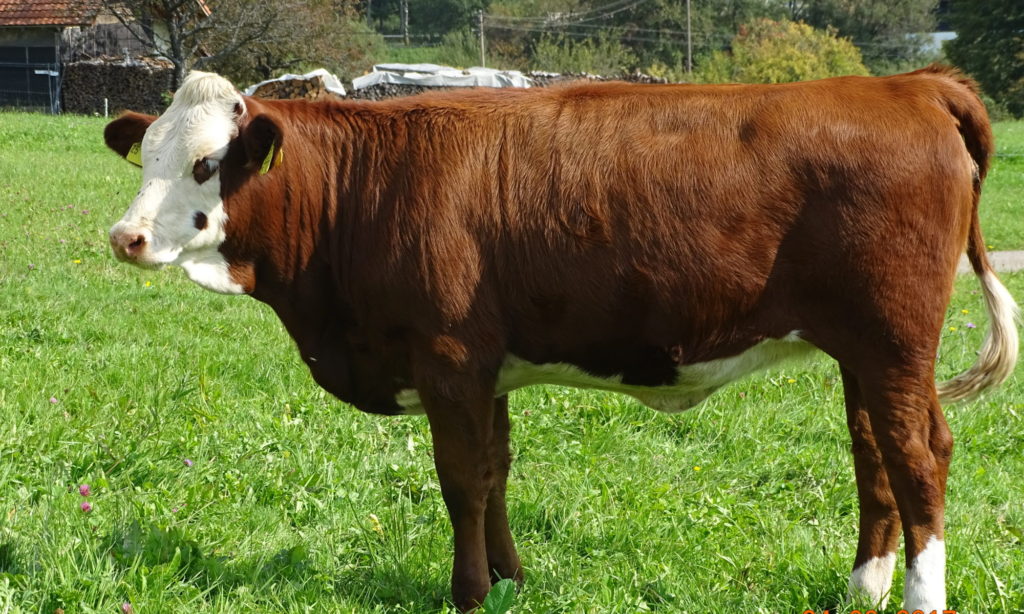
Vorderwald Cattle are a dual purpose cattle breed adapted, like the related Hinterwald cattle breed, to the rough mountain conditions of the Black Forest in Germany.
They are reputed to be long-lived with strong legs and feet allowing them to graze on the mountains. The head and legs are generally white and the body has red, brown or even black patches or spots. They have forward curved horns.
The so-called “Wald Cattle” was mentioned for the first time in 1544. They were already differentiated between a bigger breed, today’s Vorderwald cattle, and a smaller breed, today’s Hinterwald cattle. A herdbook was established in 1896. After 1960 some was crossbreeding with Ayrshire cattle.
2. German Black Pied Dairy cattle
The German Black Pied Dairy was a dairy cattle breed of the GDR, created through combination breeding.
In 1963, Georg Schönmuth suggested that Jersey bulls from Denmark be crossed with German Black Pied cows. The descendants of this crossing were to be crossed with Holsteins.
The goal of this three-breed cross was to create a cattle breed with high milk production, high milk fat content, and sufficient beef performance.
This breed was continued until 1990. After German reunification, the German Black Pied Dairy cattle were displaced by German Holstein cattle.
3. Murnau-Werdenfels Cattle
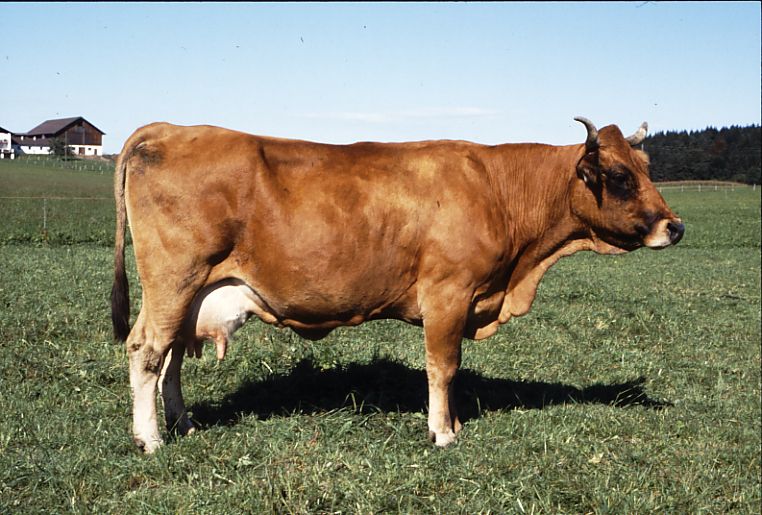
Murnau-Werdenfels Cattle are an old, robust dairy breed from Upper Bavaria, the southernmost part of Germany.
The animals are brown-yellow, but there are great colour variations from straw-yellow to reddish-brown. Hooves and horn tips are black. There is a white rim around a dark muzzle. They are very long-lived and fertile. It is a German breed that is specially adapted to husbandry in boggy landscapes.
The breed originated in Tyrol, Austria and is closely related to Brown Swiss, Braunvieh and Tyrolese Grey Cattle. Nowadays the main breeding region is around Garmisch-Partenkirchen and Murnau that is also called “Werdenfels Country”. The breed is in danger of extinction, with only around 130 females in the herdbook and frozen semen from around eleven males. the breed was voted Endangered Breed of the Year 2007 by the German Society for the Conservation of Old and Endangered Livestock Breeds. The Federal State of Bavaria maintains a suckler herd of cows and a sperm bank. It gives financial support to breeders.
4. Rotes Höhenvieh

The Rotes Höhenvieh is a breed of red cattle from the Central Uplands of Germany. It was created in 1985 as a merger of the few remaining examples of some closely similar regional breeds of upland red cattle. Reconstruction of the breed was made possible by the discovery of a stock of semen in a sperm bank. The name means “red upland cattle”
Recovery of the breed was based on about 20 cows, not pure-bred but retaining some characteristics of the old breed, and on the rediscovery in the Zentralbesamungsstation or semen collection centre of Giessen, in Hesse, of about 60 doses of semen from a pure-bred bull.
5. Angeln cattle
The Angeln is a breed of cattle originally from Angeln in Schleswig-Holstein where they are first mentioned around 1600. however, some people think that they may have existed for over 5000 years. Breed management has been practised since 1830. Angeln cattle are red in colour and were one of the founders of the larger Danish Red Cattle breed. They are noted for the high milkfat level of their milk.
6. German Angus
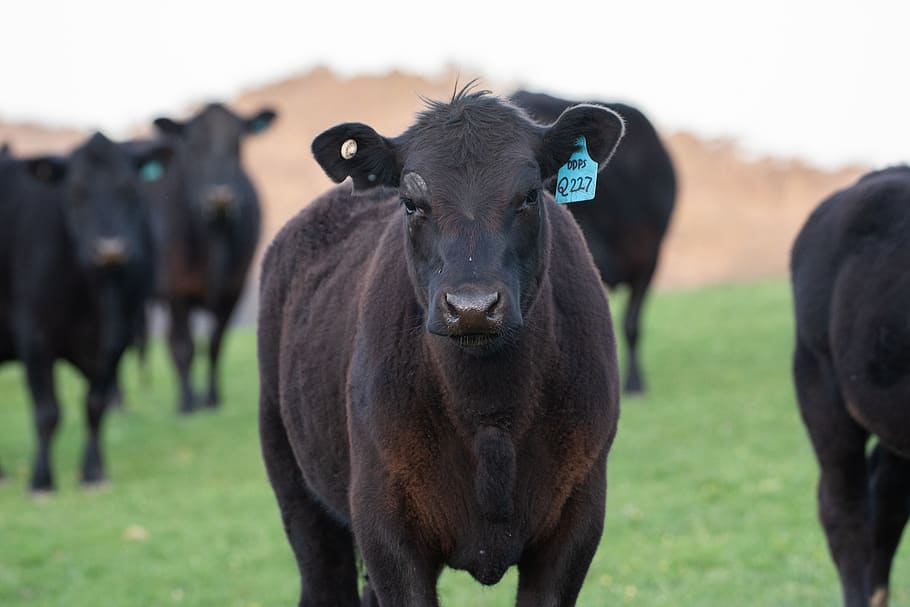
The German Angus is a modern German breed of beef cattle. It was bred in the 1950s in Germany by crossing Aberdeen Angus with various native German cattle breeds: German Black Pied, Deutsche Rotbunte, and Fleckvieh.
In 2017 the population was recorded as 9603 cows and 454 bulls.
The German Angus is solid-coloured, black, brown or red, and is always naturally polled (hornless). Compared to the Fleckvieh it matures earlier, calves much more easily and has a higher calving rate, while the calf mortality rate is much lower. A comparative study of recently-weaned calves of the two breeds found the German Angus to be more easily handled and more placid. It is larger and leaner than the original Scots Angus.
The German Angus is reared principally for beef. It may also be used in vegetation management.
7. German Black Pied cattle
German Black Pied cattle are a breed of dairy cattle that originated in the North Sea coastal regions of northern Germany and the Netherlands.
Until the 18th-century cattle of diverse colours were bred in these regions. After 1750 the black pied coloured type was dominant. But there are still also uncoloured red and red pied cattle.
German Black Pieds are smaller than Holstein Friesians and with a lower milk volume, but they are more fertile and long-lived. A comparison was made between the rates of muscle growth and energy utilisation of Fleckvieh bulls as compared to German black pied bulls. It was found that the Fleckvieh bulls had faster growth rates, the carcases had a smaller proportion of fat, especially abdominal fat, and the animals could be slaughtered at an earlier date when fed on similar diets.
8. Fleckvieh
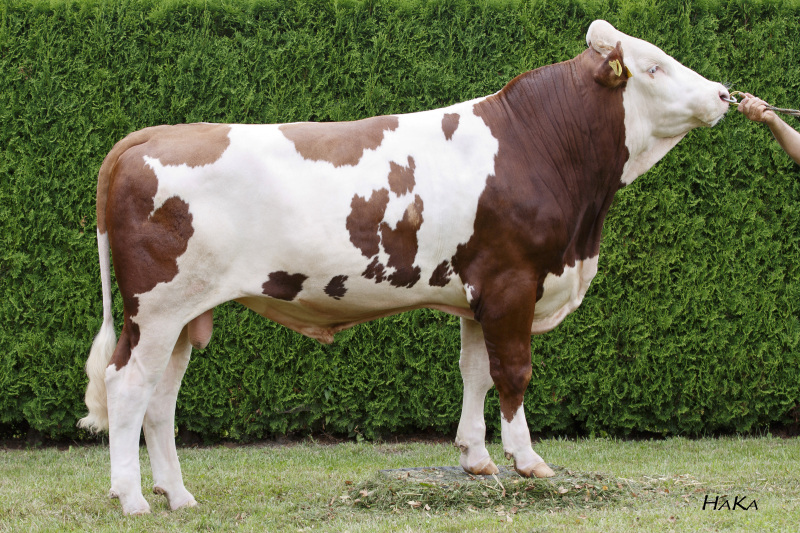
The Fleckvieh is a breed of dual-purpose cattle suitable for both milk and meat production. It originated in Central Europe in the 19th century from cross-breeding of local stock with Simmental cattle imported from Switzerland. Today, the worldwide population is 41 million animals.
The Fleckvieh originated in the Austrian Empire and the Kingdom of Bavaria from cross-breeding of local stock with Simmental cattle imported from Switzerland from about 1830. The Simmental had good milk-producing and draught qualities, and the resulting crosses were triple-purpose animals with milk, meat, and draught capabilities.
9. Gelbvieh
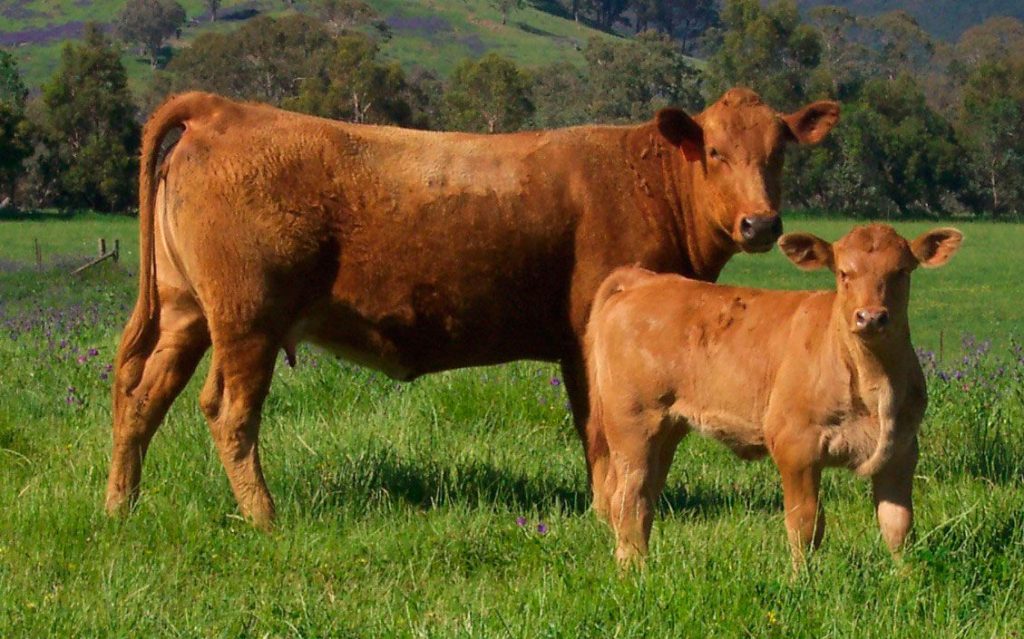
Gelbvieh is a cattle breed originating in several Franconian districts of Bavaria, Germany in the mid-18th century. Gelbvieh was originally known as “red-yellow Franconian cattle” and were developed from several local breeds. Gelbviehs were originally bred to be triple purpose cattle (used for milk, beef, and draught), but the modern Gelbvieh is primarily used for beef production.
Gelbvieh literally means “yellow cattle” in German, and the breed originated as golden brown cattle with dark hooves and full-body pigmentation. Through selective breeding, polled and black genetics are now also prevalent in the breed. Gelbvieh cattle are known for their high rate of gain and feed efficiency and were originally selected for easy growth, quick maturity, length of loin, leanness, docility, and longevity. They are able to adapt to many different rangelands and climate conditions. Gelbvieh females were selected to be very maternal with strong fertility, mothering instincts, good udders, and strong milk production. They are also known to have smaller-bodied offspring, allowing for ease of calving.
10. Harzer Rotvieh
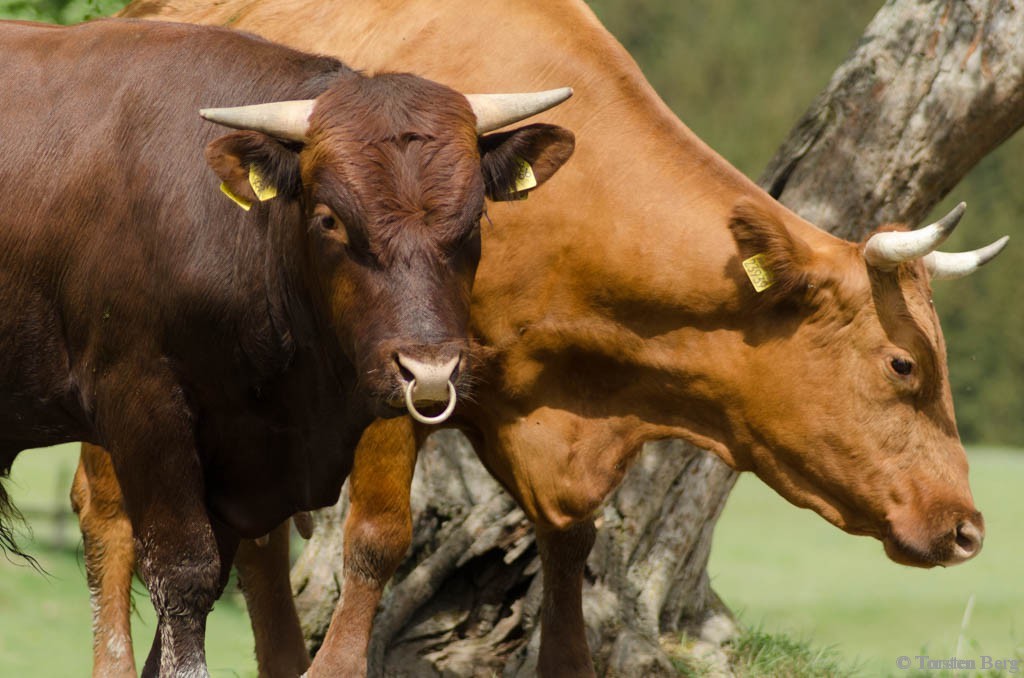
The Harzer Rotvieh is a unicoloured red cattle breed from the Harz in Germany. They serve the purposes of providing milk, beef and draught power. The name means “red cattle of the Harz”.
This cattle breed stemmed from the red cattle breeds of South and Middle Germany and traced probably back to uncoloured red Germanic-Celtic Cattle. Out of them, a local cattle breed developed under the tough conditions of the Harz mountain range.
In the 1950s this cattle breed was crossed with Danish Red bulls to increase milk yields. Later they crossed in Angeln cattle. Since 1980 the Harzer Rotvieh has been only a variety of the Angeln breed.
In the middle of the 1980s, they took remaining animals of the old Harzer Rotvieh (that were already mixed) to synthesize a new population of “Red Cattle, breeding type upland cattle”, the Rotes Höhenvieh.
12. Hinterwald
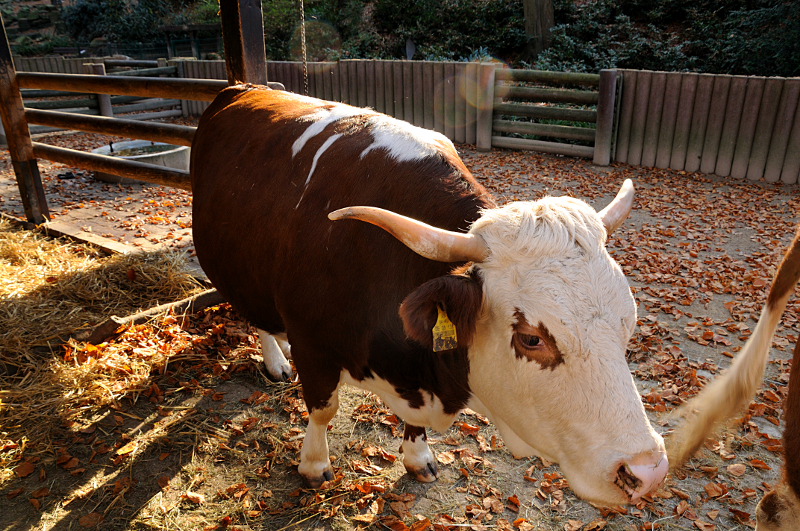
The Hinterwald is an old local breed of cattle from the Black Forest. There is a breed association in Germany and one in Switzerland.
The cows are small, only 115 to 125 centimetres (45 to 49 in) tall and weighing 380 to 480 kilograms (840 to 1,060 lb), making them the smallest breed of cattle still extant in Central Europe. The head is mostly white, the remainder of the coat being pied light yellow to dark red-brown. Having been bred to cope with extreme conditions, such as cold winters, steep pastures and a frugal diet, they are well adapted to the Alpine climate. They are used for both beef and milk production and are noted for their thriftiness, longevity and lack of calving difficulties.
The breed was “Domestic Animal of the Year” in Germany in 1992.